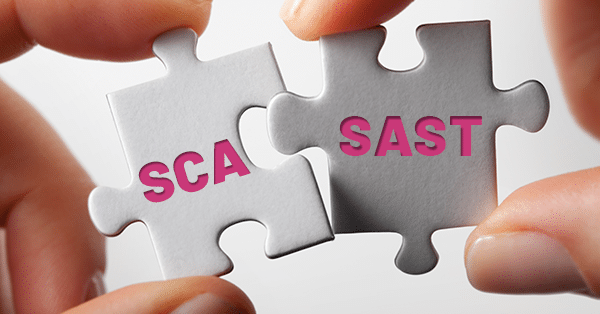

Most developers don’t build applications from scratch. Instead, they use a mix of original development, code reused from other programs, and some third-party components. What often happens is that developers get deep into the weeds of making sure it all works as intended. That means they may overlook problems that can lead to security issues.
That’s where Static Application Security Testing (SAST) and Software Composition Analysis (SCA) come into play. Both help developers catch today’s mistakes before they lead to tomorrow’s data breaches. They both play an essential role in software security testing. Let’s look deeper at what each involves and how they help developers become more proactive at closing security gaps in their code.
SAST processes go through each code line to locate security issues. Platforms like Kiuwan include this as part of their suite of security tools. SAST applications run during the development phase. These tools are essential to IT organizations looking to move to a shift-left approach to the software development lifecycle, where testing starts during development.
One of the most significant benefits of using SAST tools is they look through the entire code base, including any third-party libraries or frameworks. That allows for detecting a more comprehensive range of security vulnerabilities that might be overlooked. SAST tools are non-intrusive because they don’t run during code execution.
Kiuwan’s SAST tool provides developers with real-time feedback, guiding them to the exact location of flaws in their code. This support allows them to rewrite the code before passing it to the next SDLC phase, ensuring a more secure and robust application.
Using SAST tools is critical in helping companies remediate potential security vulnerabilities at the earliest stages. In a traditional SDLC, security reviews happen at the end of the cycle, meaning reviews happen simultaneously. That can lead to something being missed, allowing an issue to make its way into a production environment.
Once those vulnerabilities become public, they become a target for bad actors. They can use those security holes to access a user’s information or go deeper into a company’s systems.
Another benefit of SAST tools is that they integrate seamlessly into continuous integration/continuous delivery (CI/CD) pipelines. The same SAST tools that review code can also perform security checks throughout the development lifecycle.
SCA automated processes examine open-source software and check for vulnerabilities against the National Vulnerability Database (NVD). They also compare Bills of Materials (inventory of components contained within a third-party library) against other public databases to check for license issues.
While SAST tools review open-source libraries to a certain extent, SCA tools do so at a deeper level. With SAST, the developer typically rewrites the code to remove vulnerabilities, while SCA tools apply patches directly to an existing component. Kiuwan’s SCA capabilities allow developers to:
In addition to finding vulnerabilities in third-party components, SCA tools can check licenses to ensure there are no conflicts. They assess each component and ensure organizations understand where potential vulnerabilities should fall when assessing possible risks.
Because so many applications rely on third-party libraries to perform, organizations must have tools that track any non-proprietary software in use. This allows them to keep an open-source and third-party software inventory running on company networks.
SCA tools also work well with companies invested in DevSecOps, a framework designed to integrate security at each SDLC stage. It’s another way to ensure you know exactly what’s in your application and how it impacts security and functionality at every stage.
The most important thing to remember is that it’s not either SAST or SCA. Ideally, IT teams should incorporate both into their SDLC. That provides the best opportunity to ensure the security of any application in production. SAST checks for coding vulnerabilities, while SCA scans external libraries and components for issues. That gives you coverage for both proprietary and third-party code.
Using both also strengthens an organization’s security posture by reducing an application’s attack surfaces. Integrating SAST and SCA early in development increases the chances of identifying security problems before application deployment.
Companies operating in industries that adhere to strict regulatory requirements also benefit from SCA and SAST processes. For example, the Payment Card Industry Data Security Standard (PCI DSS) has exact rules businesses must follow when handling payment information. Using SAST and SCA tools to find and repair vulnerabilities helps ensure companies stay in compliance.
Organizations that handle patient data must protect health information in accordance with Health Insurance Portability and Accountability Act (HIPAA) mandates. Any company managing data from EU citizens must follow the General Data Protection Regulation (GDPR) guidelines regarding protecting their information.
One benefit of using Kiuwan for code security is that it gives you access to both tools. Developers can use one platform to ensure that applications do not put the company at risk of violating any industry regulations.
SCA tools run constantly to look for new open-source vulnerabilities. This is the best way to ensure that software stays compliant even as standards change and that license issues don’t impact the software’s functionality.
SAST and SCA tools are essential to helping organizations prioritize vulnerabilities according to their potential risks. SAST provides feedback on the severity of a security issue, while SCA assigns a risk score for open-source components. SCA tools guide IT professionals on how to deal with any uncovered vulnerabilities or license issues.
With more companies turning to the DevSecOps software development model, they must have tools to adhere to the framework. Kiuwan offers a full suite of security testing tools, including SAST and SCA automation, to help businesses become proactive with security by handling potential vulnerabilities early. Contact us to set up a free demo to assess the platform.


